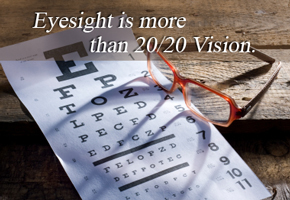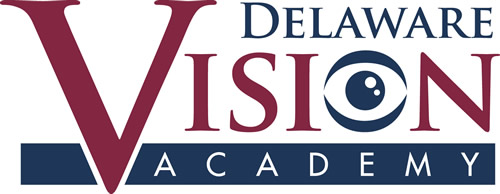Going Beyond 20/20 Vision with Vision Therapy
Yearly eye exams maintain good eye health and visual acuity. Acuity is measured by the ability to read a letter chart from a distance of twenty feet. 20/20 sight refers to normal visual acuity. If a patient has difficulty reading the letter chart clearly, glasses or contacts may be prescribed.
 However, some patients may show signs of other visual dysfunctions even though they have 20/20 sight. In these instances, a developmental vision evaluation may be necessary. This evaluation is designed to test eye movement, eye coordination, and other visual skills. A deficiency in these capabilities can interfere with reading, learning, and daily life activities. Vision rehabilitation may be recommended to help develop these necessary skills.
However, some patients may show signs of other visual dysfunctions even though they have 20/20 sight. In these instances, a developmental vision evaluation may be necessary. This evaluation is designed to test eye movement, eye coordination, and other visual skills. A deficiency in these capabilities can interfere with reading, learning, and daily life activities. Vision rehabilitation may be recommended to help develop these necessary skills.
What is vision rehabilitation?
Vision Rehabilitation is a specialized optometric therapy program prescribed to eliminate or improve conditions such as lazy eye (amblyopia), crossed eyes (strabismus), eye focusing, eye teaming and learning related vision disorders. Special lenses, prisms, filters, and instruments are used along with specialized instruments and advanced computer systems. Optometric vision rehabilitation also facilitates appropriate visual development, and serves as a component of the multi–disciplinary effort following stroke or head injury.
Signs & Symptoms – Check all symptoms you have observed:
How long does vision rehabilitation take?
Vision rehabilitation involves a combination of therapeutic activities which are done at home as well as in the office. In office sessions are typically once a week for 50 minutes, and we recommend an additional 20 minutes of home therapy practice three times a week. Many visual disorders can be eliminated in 16–24 visits. Visual processing issues are more complicated and often require longer periods of therapy. Vision rehabilitation for learning related vision problems may require 25–36 visits. Visual skills need to be developed until they become automatic and are subconsciously integrated with the other skills. The extent of success is also linked to the patient’s compliance and motivation.
Is there research to support vision rehabilitation?
There are a significant number of research studies supporting the effectiveness of vision rehabilitation for treatment of eye–teaming, focusing, tracking and visual processing problems. Most studies have been published in the optometric literature, although recently ophthalmologists have also reported great success using vision rehabilitation.
Is there a link between vision and learning?
There are many visual skills required for learning that are not typically tested in a routine eye exam. Some of these skills include:
Eye Movement: If you think about how you use your eyes when you read, you will find that your eyes move a lot; back and forth along the lines of print. Inadequate eye movements may cause a student to lose his or her place when reading, have difficulty copying from the blackboard, and skip or omit small words when reading.
Focusing: Symptoms of a focusing problem may include blurred vision while reading, inability to see clearly at distance after reading, and fatigue or headaches while reading. In addition, there is a condition called amblyopia (lazy eye) which is also a focusing problem.
Eye Teaming: When the two eyes do not work together, it may result in double vision, frequent loss of place when reading, headaches or eyestrain, and inability to stay focused on a visual task for any prolonged period of time. Children may have difficulty staying focused or paying attention when working on schoolwork. In addition, there is a condition called strabismus (eye turn) where one eye will either turn in or out instead of working the way it is supposed to.
Eye–Hand Coordination: Efficiency in any task such as writing, drawing, and throwing or catching a ball requires well developed eye–hand coordination skills.
